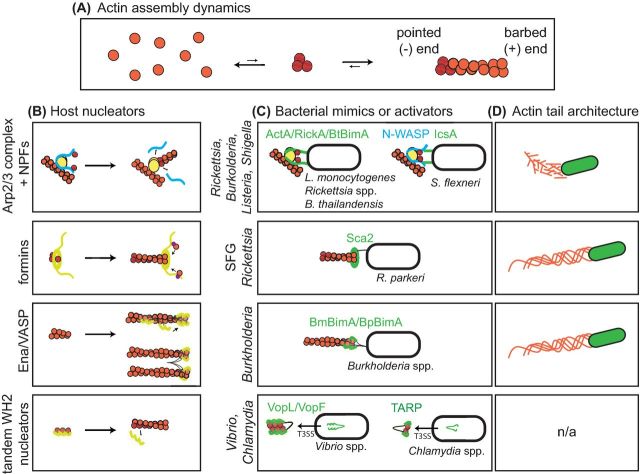Figure 2.
Eukaryotic actin nucleators and their bacterial mimics. (A) Spontaneous nucleation of actin (orange) involves the formation of a trimer (red), which is kinetically unfavorable. Once a trimer forms, the filament can elongate (or shrink) at both the barbed (+) end or pointed (–) end, although elongation (and shrinking) is faster at the barbed end. (B) Four types of host proteins promote actin nucleation and/or elongation, including the Arp2/3 complex (yellow) and NPFs (blue), formins (yellow) and profilin (magenta), Ena/VASP proteins (yellow), and tandem-WH2-based nucleators (yellow). (C) Bacterial proteins (green) mimic or recruit each different class of host actin-polymerizing proteins (yellow and blue). (D) Representation of actin filament organization in actin tails (orange) corresponding to the bacterial genera and/or species indicated in (C).

